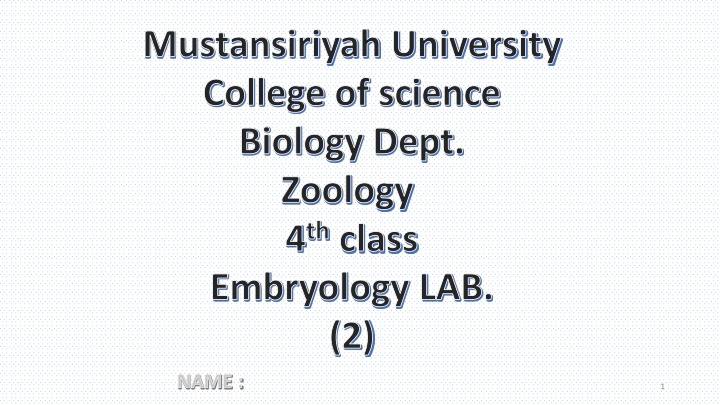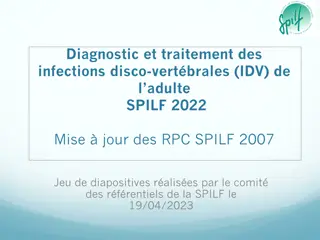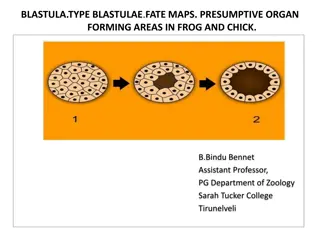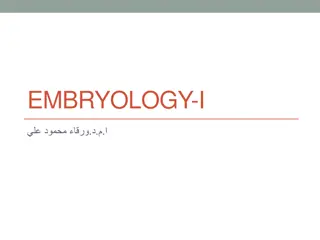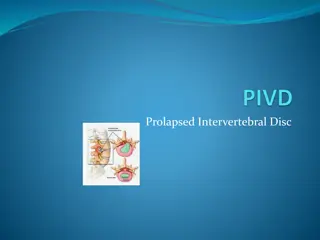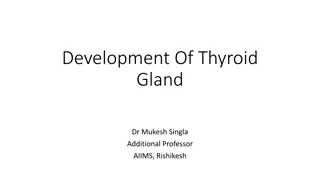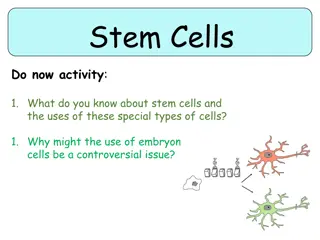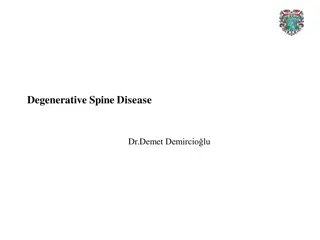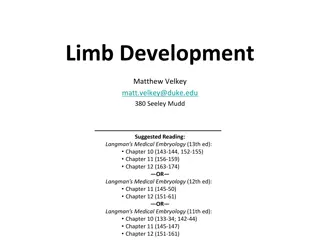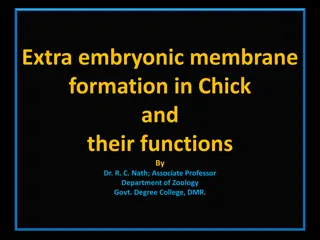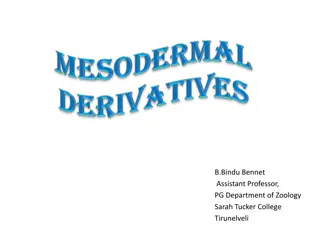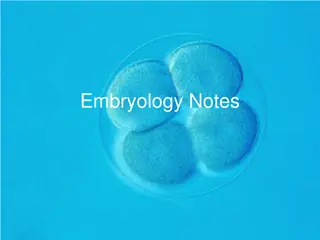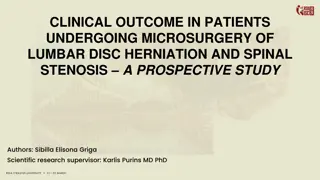Embryonic Development in the Second Week: Bilaminar Disc Formation
By the second week of embryonic development, the bilaminar embryonic disc is partly implanted in the endometrium, initiating the decidual reaction. The trophoblast differentiates into cytrotrophoblast and syncytiotrophoblast. The blastocyst's inner cell mass differentiates into epiblast and hypoblast layers, forming the bilaminar embryonic disc. The amniotic cavity and primary yolk sac develop, and the chorionic cavity forms. By days 12-13, significant changes occur in the trophoblast, with the development of primary chorionic villi and enlargement of cavities. Hormone HCG production by syncytiotrophoblast maintains the corpus luteum.
Download Presentation

Please find below an Image/Link to download the presentation.
The content on the website is provided AS IS for your information and personal use only. It may not be sold, licensed, or shared on other websites without obtaining consent from the author.If you encounter any issues during the download, it is possible that the publisher has removed the file from their server.
You are allowed to download the files provided on this website for personal or commercial use, subject to the condition that they are used lawfully. All files are the property of their respective owners.
The content on the website is provided AS IS for your information and personal use only. It may not be sold, licensed, or shared on other websites without obtaining consent from the author.
E N D
Presentation Transcript
Mustansiriyah University College of science Biology Dept. Zoology 4thclass Embryology LAB. (2) NAME : 1
The 2nd week The 2nd week of bilaminar embryonic disc of bilaminar embryonic disc At this stage the embryo is partly implanted in the endometrium. The implantation process initiates the decidual reaction or decidualization in the uterine stroma. the cells of which contribute the maternal component of the placenta. The trophoblast begins to differentiate: A. CYTOTROPHOBLAST. its inner part becomes a single layer of cells. B. SYNCYTIOTROPHOBLAST. The outer layer is more extensive and is the invasive layer. Implantation and formation Implantation and formation
By this stage, the inner cell mass of the blastocyst has differentiated into two layers: A. Epiblast. These two layers are in contact and form a bilaminar embryonic disc. B. Hypoblast. Epiblast: 1. Within the epiblast a cavity develops, the amniotic cavity, which fills with amniotic fluid. 2. Some epiblast cells become specialized as amnioblasts, and they secrete the amniotic fluid. Hypoblast: The exocoelomic membrane is derived from the hypoblast and lines the cavity that appears beneath the endoderm, the primary yolk sac. 3
The fluid contained in this sac is the source of nutrition for the embryo before the placenta is fully formed and functional. By 12 days there has been significant change in the trophoblast. 1. Small clefts appear in the syncytiotrophoblast called lacunae which deriving nutritional support for the developing embryo. 2. Clefts appear between the exocoelomic membrane and the cytotrophoblast These merge to form the extra-embryonic coelom and this cavity comes to almost completely surround the embryo. This is the chorionic cavity. 6
By day 13 the lacunae have enlarged further. The cytotrophoblast has begun to form primary chorionic villi. The embryo proper consists of two layers, the epiblast and the hypoblast, still closely applied to each other. The two cavities continue to enlarge, with the amniotic cavity above the epiblast and the yolk sac below the hypoblast, now known as the secondary yolk sac because of the presence of the chorionic cavity. The embryo is connected to the cytotrophoblast by a connecting stalk,This stalk is the indication of the umbilical cord. 7
By the end of the second week the syncytiotrophoblast produces the hormone human chorionic gonadotrophin (HCG), which maintains the corpus luteum in the ovary, which in turn sustains the thickness of the endometrium. The hormone is secreted in the urine and thus its presence is an early indicator of pregnancy. This is the basis upon which pregnancy test kits work. 8
